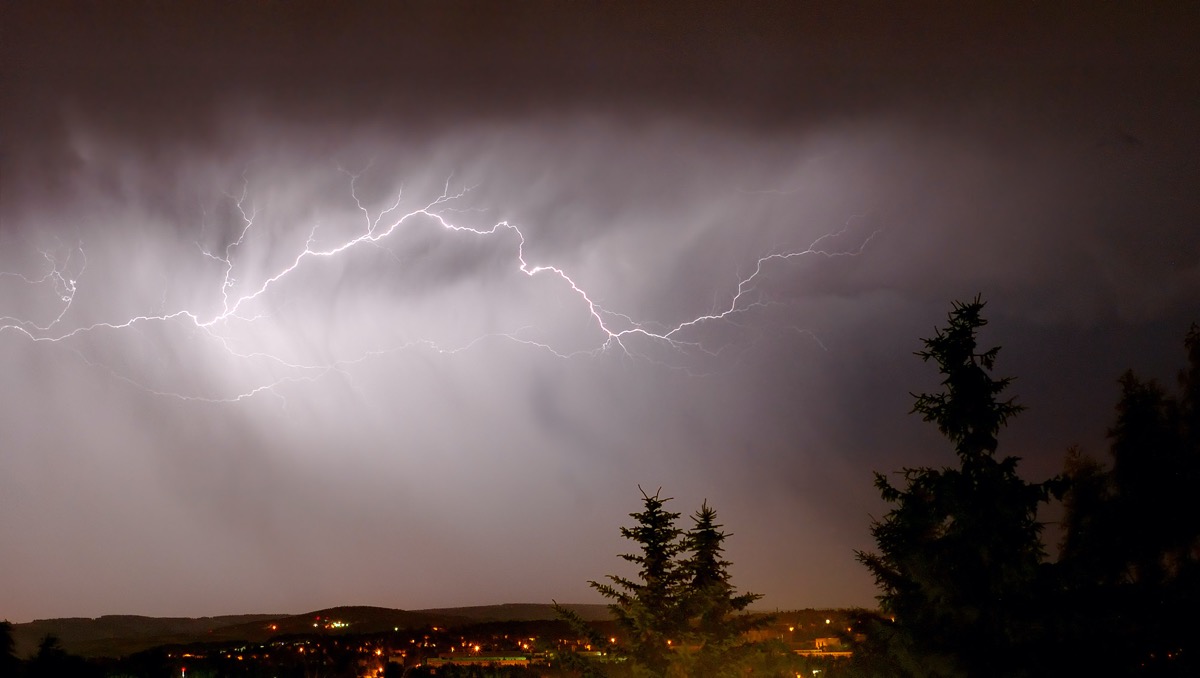The World According To Sound: Listening To Lightning
1:53 minutes

There is more than one way to listen to a bolt of lightning. While you can pick up the boom and rumble of thunder with your ears, if you tune in with a radio receiver, you can hear an entirely different sound: an earth whistler.
When lightning strikes, it releases electromagnetic radiation in the VLF or Very Low Frequency band, which runs from 3 Hz to 30 kHz. This falls within the human range of hearing, which spans from 20 Hz to 20 kHz. However, we can not hear whistlers with our own ears because the radiation is electromagnetic, not physical vibrations in the air.
We can, though, capture the electromagnetic radiation with a radio receiver. Radio operators have been picking up the strange twanging of lightning ever since they started trying to tune into man-made signals. They dubbed the eerie electro-magnetic disturbances in their headphones “earth whistlers.”
People first heard earth whistlers back in the 19th century. The electromagnetic radiation from lightning interfered with telephone lines and crept into phone conversations. You’d be talking with someone and hear these bursts of energy, like little phone ghosts.
Today, we know earth whistlers are made by the interaction of lightning with the planet’s magnetic field. There are over a million lightning strikes in the atmosphere, which means there is a nearly constant chorus around earth.
The whistlers in this piece were provided courtesy of NASA and The University of Iowa.
The World According to Sound is a live audio show, online listening series, and miniature podcast that focuses on sound, not story. Producers Chris Hoff and Sam Harnett create intentional, communal listening experiences as a way to “reclaim autonomy in a visually dominated world that is increasingly fracturing our attention.”
This recording is part of their next listening series, an immersive listening party where audiences from all over the globe will be invited to experience a world of sound together, beginning in January 2022. You can get a ticket to the series here.
IRA FLATOW: Have you ever heard lightning? And no I’m not talking about thunder. Here’s something very different via a soundscape from Chris Hoff and Sam Harnett of The World According to Sound podcast.
[ELECTRONIC SOUND]
[ELECTRONIC SOUND CONTINUES]
SAM HARNETT: When lightning strikes, it releases electromagnetic radiation that can be picked up by radio operators who call them Earth whistlers.
[ELECTRONIC SOUND]
[ELECTRONIC WHISTLING]
SAM HARNETT: There are several million lightning strikes a day on the planet, which means there’s a constant chorus of whistlers in the atmosphere around Earth.
[ELECTRONIC WHISTLING]
[ELECTRONIC SOUND]
[ELECTRONIC SOUND CONTINUES]
[ELECTRONIC WHISTLING]
[ELECTRONIC SOUND CONTINUES]
[ELECTRONIC WHISTLING CONTINUES]
[ELECTRONIC WHISTLING CONTINUES]
[ELECTRONIC WHISTLING CONTINUES]
IRA FLATOW: These sounds are part of a communal listening series The World According to Sound is hosting this winter. For Information about their 80-minute binaural events, visit theworldaccordingtosound.org.
John Dankosky works with the radio team to create our weekly show, and is helping to build our State of Science Reporting Network. He’s also been a long-time guest host on Science Friday. He and his wife have three cats, thousands of bees, and a yoga studio in the sleepy Northwest hills of Connecticut.
Kyle Marian Viterbo is a community manager at Science Friday. She loves sharing hilarious stories about human evolution, hidden museum collections, and the many ways Indiana Jones is a terrible archaeologist.
Ira Flatow is the founder and host of Science Friday. His green thumb has revived many an office plant at death’s door.